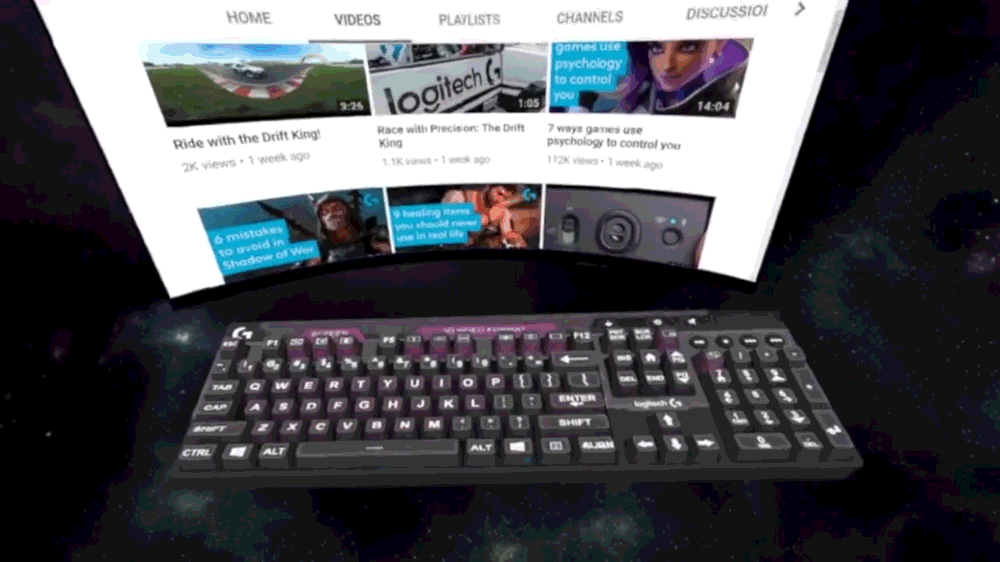
11-04: 3Q17 smartphone shipment – 400M (CP), 373M (IDC), 393M (SA); Broadcom is reportedly considering buying Qualcomm for USD100B; etc.
Chipsets
Worldwide sales of semiconductors reached USD107.9B in 3Q17, marking the industry’s highest-ever quarterly sales and an increase of 10.2% compared to the previous quarter, according to the Semiconductor Industry Association (SIA). Sales for the month of Sept 2017 were USD36B, an increase of 22.2% over the Sept 2016 total of USD29.4B and 2.8% more than the previous month’s total of USD35B. (SIA, Digitimes, HC360)
Broadcom is reportedly considering buying Qualcomm for USD100B with a capital B. Such a bid would give Broadcom significant leverage over components like Wi-Fi and cellular modem chips. (Android Authority, Bloomberg, Sohu)
Marvell Technology Group is reportedly in advanced talks to buy Cavium – a deal that would create a chipmaker worth about USD14B. (CN Beta, WSJ, Reuters)
Artificial Intelligence (AI) is gaining traction, and international vendors are aggressively layout their strategic plans. In particular Intel and Nvidia have been pouring out investments to expand their AI portfolio and roadmap. (Digitimes, Laoyaoba, EE World)
Touch Display
Taiwan-based flat panel makers are expected to ship a combined 290M small- to medium-size TFT-LCD panels in 4Q17, down 8.5% on quarter, due mainly to seasonality, Digitimes Research estimates.In 3Q17, small- to medium-size panel shipments were up 19.7% sequentially to 317M units thanks to higher-than-expected output from 6G LTPS lines at AU Optronics (AUO) and Innolux and increased demand for panels from the feature phone sector in India, Digitimes Research has found. (Digitimes, press, Digitimes)
Graphene is the world’s most impermeable material, and as the material is also transparent, flexible and ultra-thin it makes sense to adopt graphene as an encapsulation layer for next-gen OLED displays. The new research led by Gravia used ALD and CVD to create large-area high-quality single-layer graphene sheets, which are stacked to create a multi-layer coating. A ~10 nm barrier layer that includes 3-4 layers of graphene (with AlOx in between) is an effective solution for OLED displays. The 10 nm layer maintains a high optical transparency (>90 %) and high flexibility. (OLED-Info, Graphene Info, China FPD, Nature)
Samsung has increased its sales of flexible OLEDs, but prices of rigid OLED panels declined. Display Supply Chain Consultancy (DSCC) estimates that the utilization at Samsung’s OLED fab fell from mid-80% to mid-70% mostly due to delays in shipments to Apple. The low utilization rate resulted in a decline in OLED operating income, which fell 37% from 2Q17. Revenues actually increased. (OLED-Info, DSCC, press)
Camera
Samsung will reportedly implement a rear-facing dual-camera system into its next flagship smartphone scheduled to be launched in 1Q18. Samsung is also reportedly working on a rear camera that can shoot at 1,000 frames/second. (Daily Mail, TechRadar, iTer News, BGR, TechDroider)
Memory
With Samsung looking to expand production capacity, the global bit growth of DRAM in 2018 is projected to reach 22.5% compared with 19.5% in 2017, according to DRAMeXchange. Over the last 2 years, chipmakers’ limited production capacity growth and technology transition challenges have decelerated the overall DRAM industry supply bit growth. DRAM contract market prices began to rise in 2H16, driven particularly by a seasonal pick-up in end-market demand. The supply of DRAM memory has also been tight since 2017. (TrendForce[cn], TrendForce, press)
Micron has announced incoming snoopcam flash cards with up to 256GB capacity, trumpeting that edge storage is the future of video surveillance. The cards come in 32 and 64GB capacities now, with 128 and 256GB cards on the way. They use 64-layer, 2bits/cell (MLC), 3D NAND and have firmware that claims to minimise frame drops and video loss. They have been stamped with a 2 million-hour mean-time-before-failure (MTBF) rating. (Digitimes, Laoyaoba, Gears of Biz)
Sensory
More than a dozen product categories in optoelectronics, sensors/actuators, and discretes semiconductors (O-S-D) are on track to set record-high annual sales in 2017, according to IC Insights. Driven by the expansion of IoT, increasing levels of intelligent embedded controls, and some inventory replenishment in commodity discretes, the diverse O-S-D marketplace is having a banner year with combined sales across all three semiconductor segments expected to grow 10.5% in 2017 to USD75B. (IC Insights, press, Digitimes, OfWeek)
Biometrics
Chinese facial recognition start-up Megvii Face++ has raised USD460M in an investment round led by China State-Owned Venture Capital Fund and the China-Russian Investment Fund, which is backed by the sovereign wealth funds of both countries; as well as Ant Financial and Foxconn Technology. (Laoyaoba, Financial Times, Biometric Updates)
Battery
Using a technique known as cryo-electron microscopy, a team of scientists working on battery development were able to observe the chain reaction that sometimes causes lithium-ion batteries to explode. The team pinned the blame on dendrites, small crystalline structures that are formed when an excess electrical charge passes through a lithium-ion battery. As they grow, these six-sided crystals can sometimes break the barriers between different parts of a battery, which will cause it to short-circuit and, sometimes, blow up. (Digital Trends, Science Mag, Tencent)
Material
New material could be used for 3D printing everything from oil pipelines to medical implants. Lawrence Livermore National Laboratory, Ames National Laboratory, Georgia Tech University, and Oregon State University, have made a major breakthrough in the 3D printing of 316L, a type of versatile “marine-grade” stainless steel. 316L is a superior material to other marine grade steels, which have high strength, but low ductility. (Nature, Digital Trends, HC360)
Smartphones
According to Counterpoint Research, global smartphone shipments grew 5% YoY in 3Q17 reaching 400M units. Smartphone penetration reached over 80% of all the mobile phones shipped in the quarter. Chinese brands Xiaomi, vivo, OPPO and Huawei remained the fastest growing smartphone brands. Samsung led the smartphone market by volume with a market share of 20.6% in 3Q17. (Counterpoint, press, Android Headlines, Tencent)
According to IDC, smartphone OEMs shipped a total of 373.1M smartphones worldwide in 3Q17. 3Q17 volumes were up 2.7% year over year, and up 7.4% from 2Q17. Samsung once again remained the overall leader in the worldwide smartphone market with 83.3M units shipped, up 9.5% from last year. (Android Headlines, VentureBeat, IDC, press, iFeng)
According to Counterpoint Research, smartphone shipments in China were down 1% YoY but grew 3% sequentially during 3Q17. Compared to 2016, where OPPO and vivo were the fastest growing brands in China with volumes up 109% YoY and 78% YoY respectively, growth for these two brands has slowed down in 3Q17. Nonetheless, both brands are still growing at a healthy rate and have closed on the previous quarter’s leader, Huawei. (GizChina, Counterpoint, press, iFeng)
According to Strategy Analytics, global smartphone shipments grew 5% annually to reach 393M units in 3Q17. Samsung maintained first position with 21% global smartphone market share, while Apple held steady at 12% share. Xiaomi was the star performer, almost doubling its smartphone shipments from a year ago. (Strategy Analytics, press, Laoyaoba)
ASUS Pegasus 4S is announced – 5.7” 1440×720 HD+ 2.5D display, MediaTek Mt6750T processor, rear 16MP + front 8MP cameras, 3 / 4GB RAM, 32 / 64GB storage, Android 7.0, 4030mAh battery. (Android Headlines, NDTV, Deccan Chronicle, Gizmo China)
Tablets
According to IDC, the 3Q17 closed with 40M tablets shipped globally. Growth in 3Q17 declined 5.4% year over year, marking the twelfth consecutive quarter of annual decline. Although Apple still enjoys a substantial premium over competitors, the lower-priced iPad has helped it to cement the first-place position. (IDC, press, CN Beta)
Wearables
HTC Vive and Logitech introduce a new hardware and software package that aims to help developers enter text while building apps and games. The USD150 BRIDGE kit includes a Logitech G keyboard and a Vive tracker that tracks typing and replicates it in VR. (Engadget, HTC Vive, CN Beta)
Internet of Things
Per a report from Insurance Quotes, only 16.3% of homes in the U.S. are projected to fall under the “smart” category by the end of 2017 — that is to say, only 16.3% of American homes will feature more than one internet-connected device capable of controlling household functions through a hub or app. (Digital Trends, Insurance Quotes, infographic)
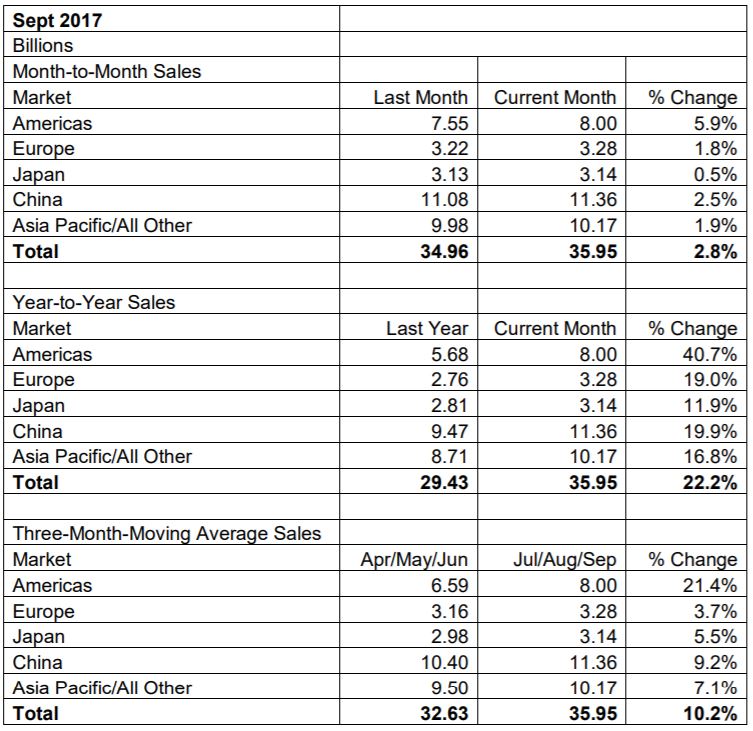
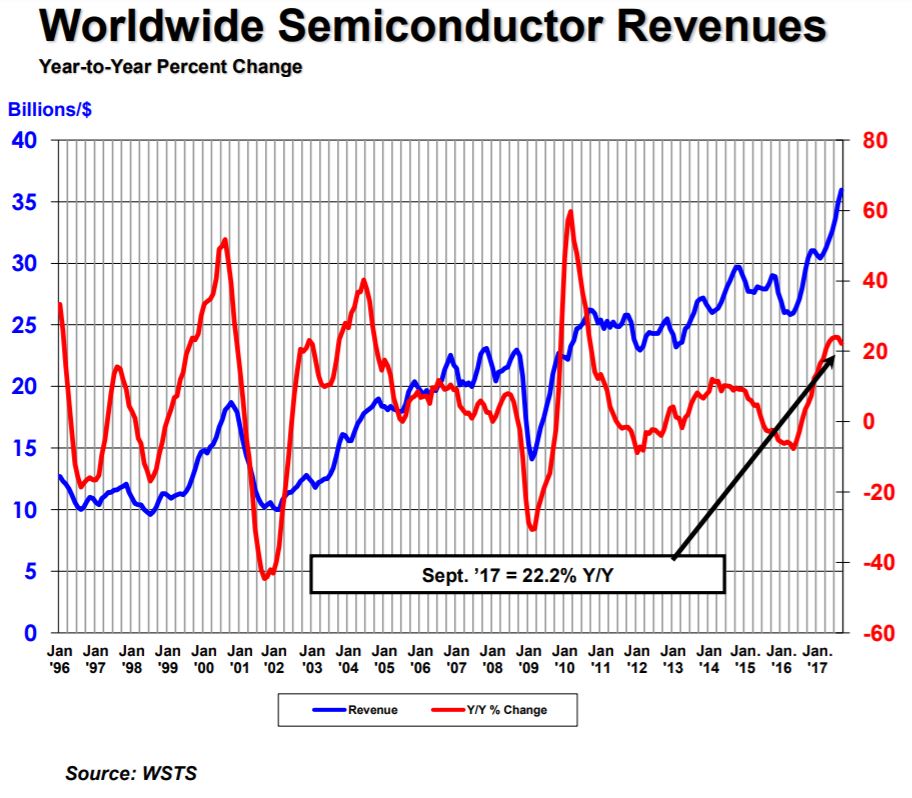
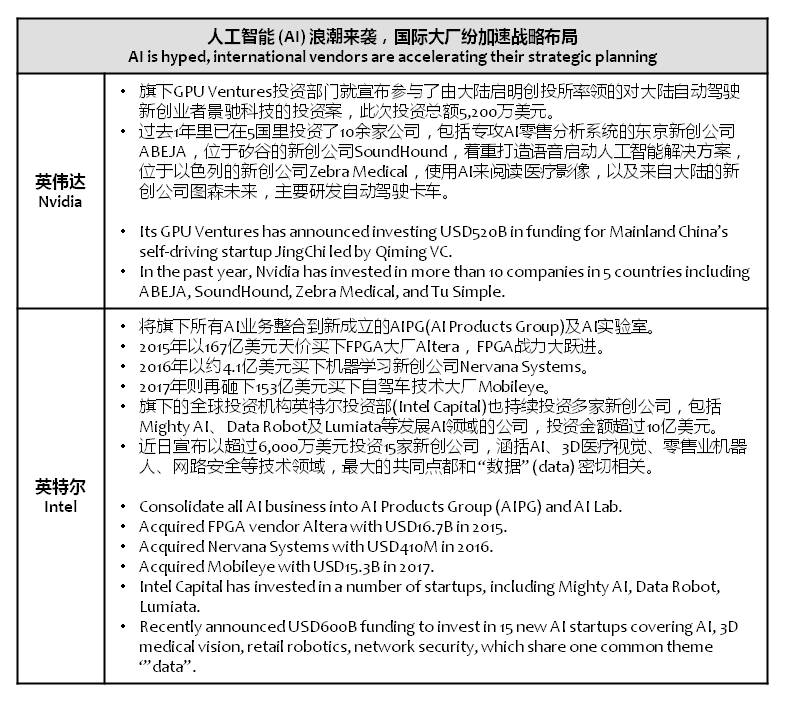
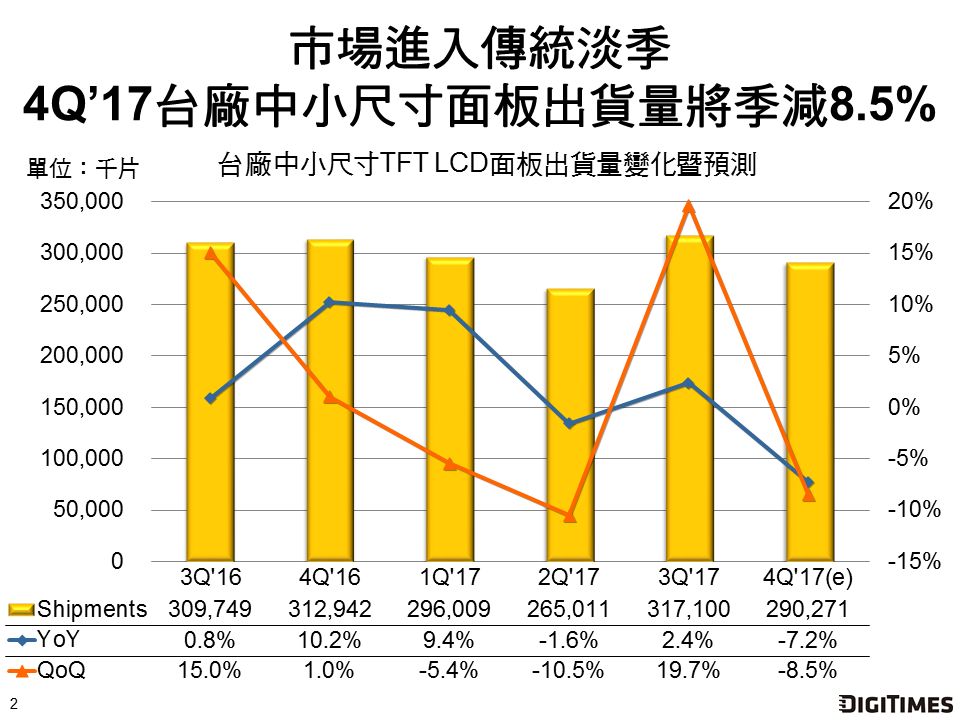
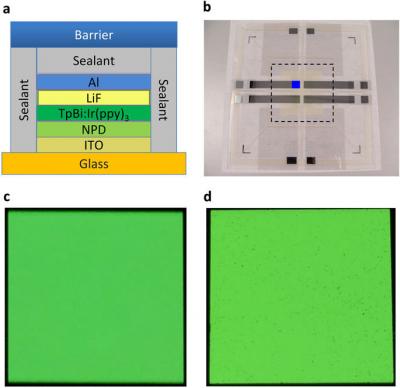
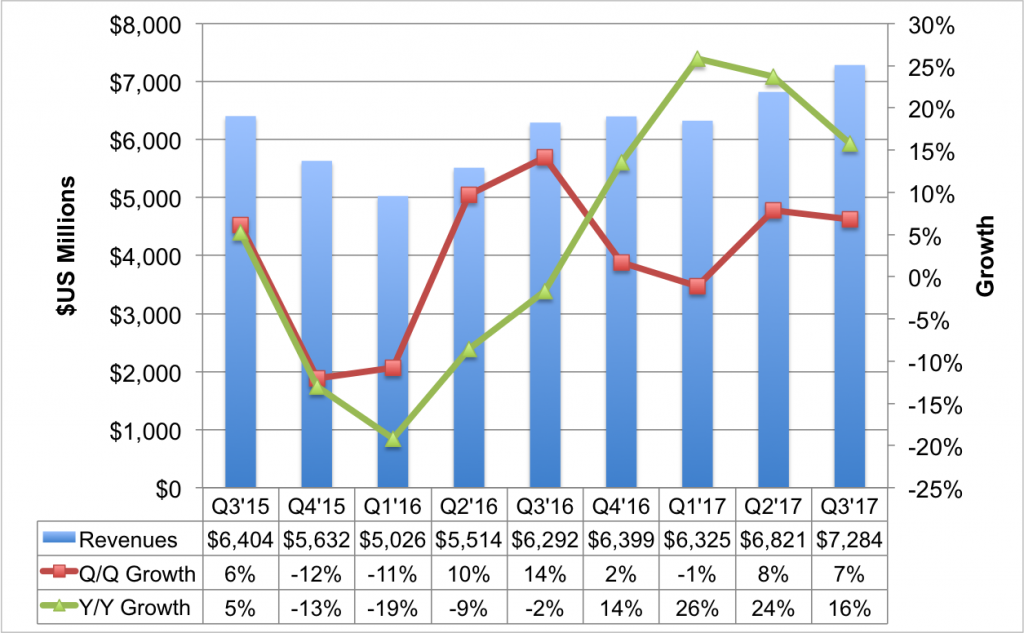
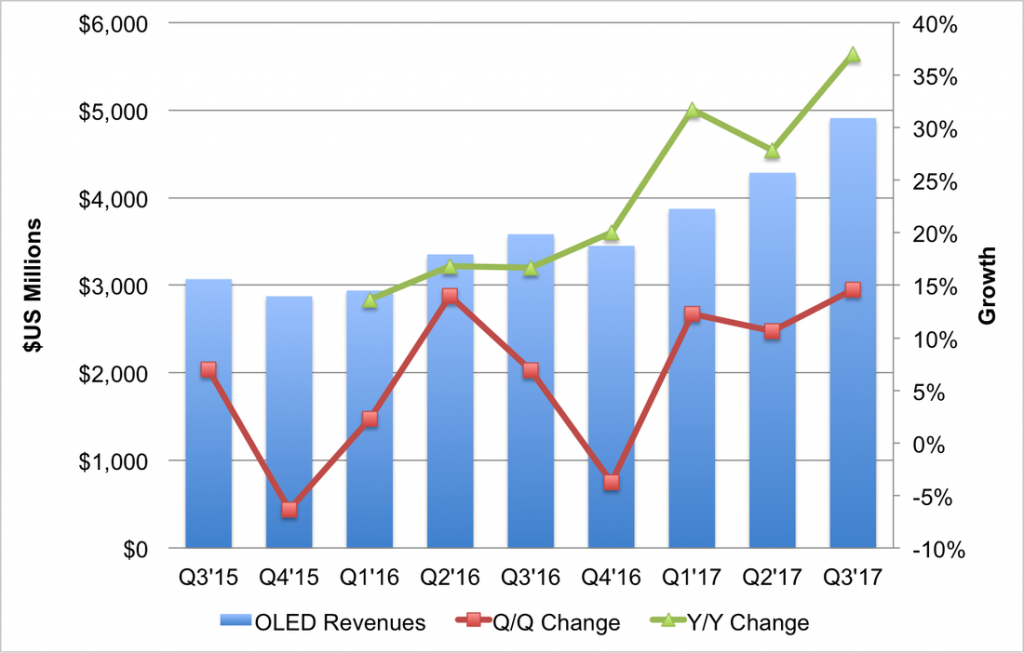


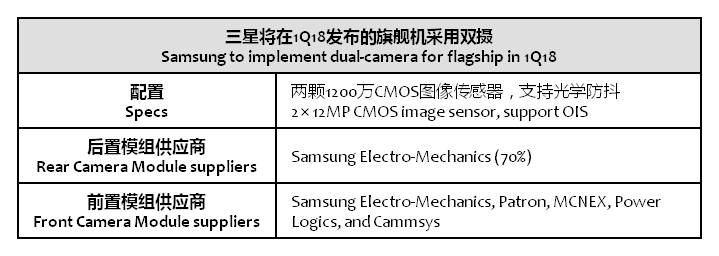
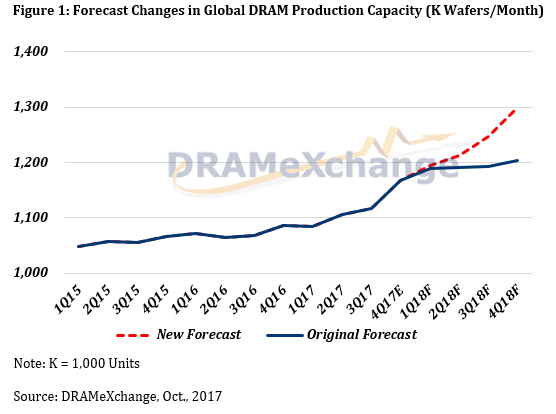
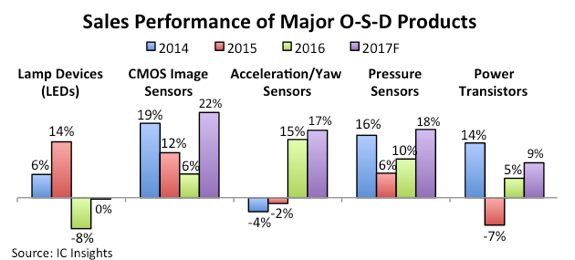
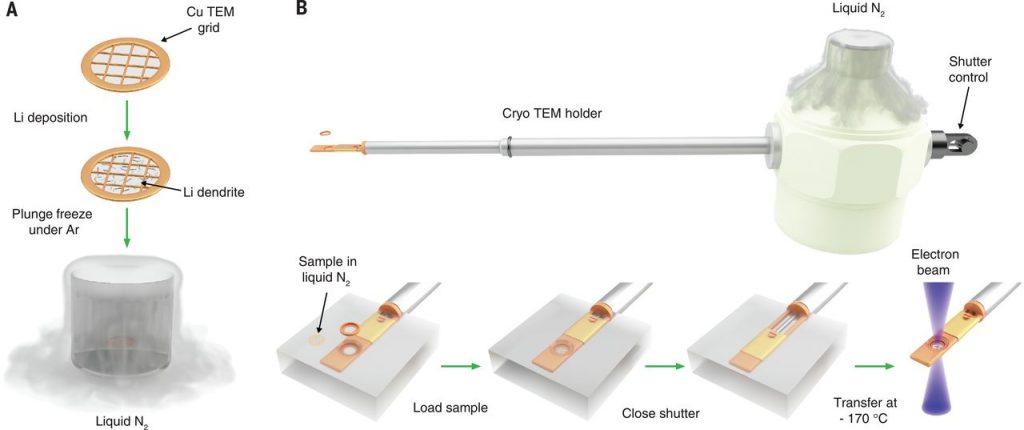
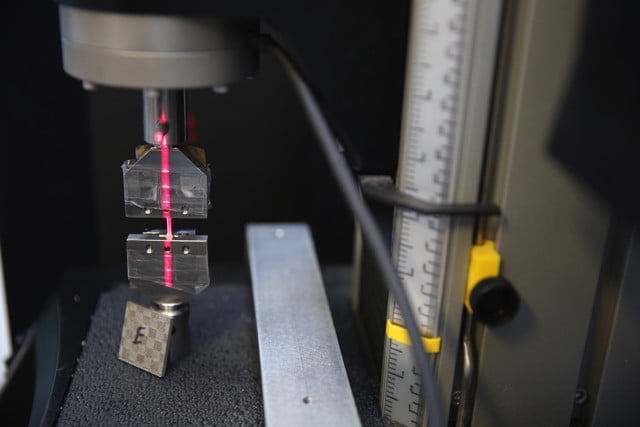
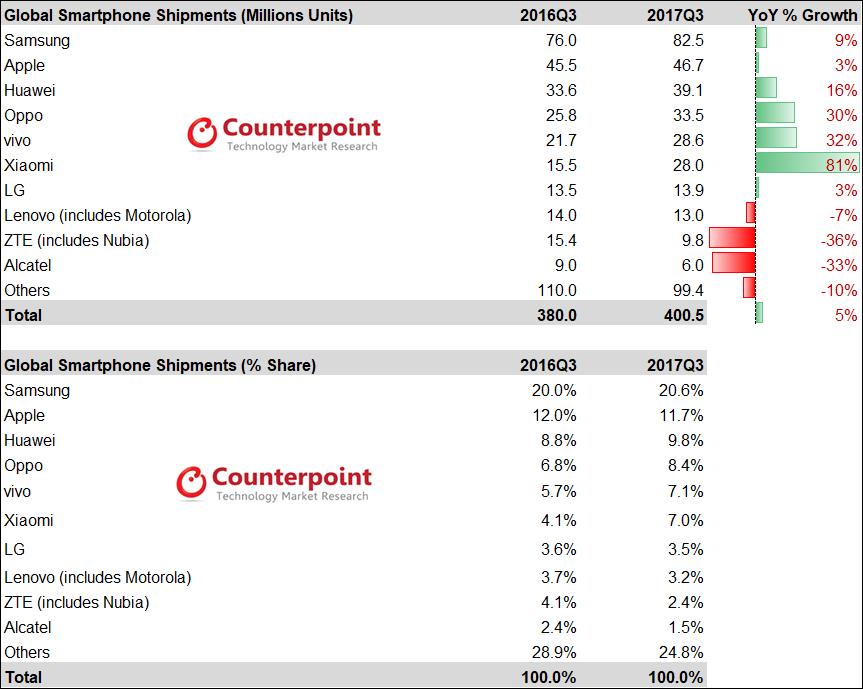
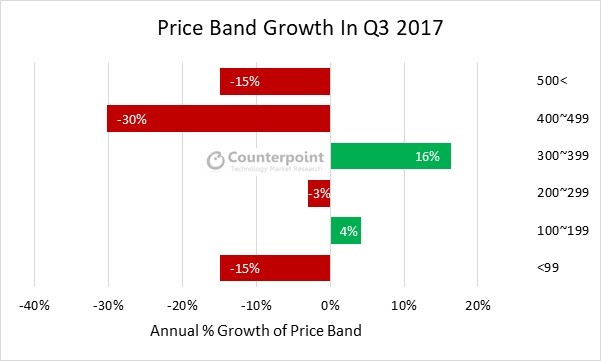
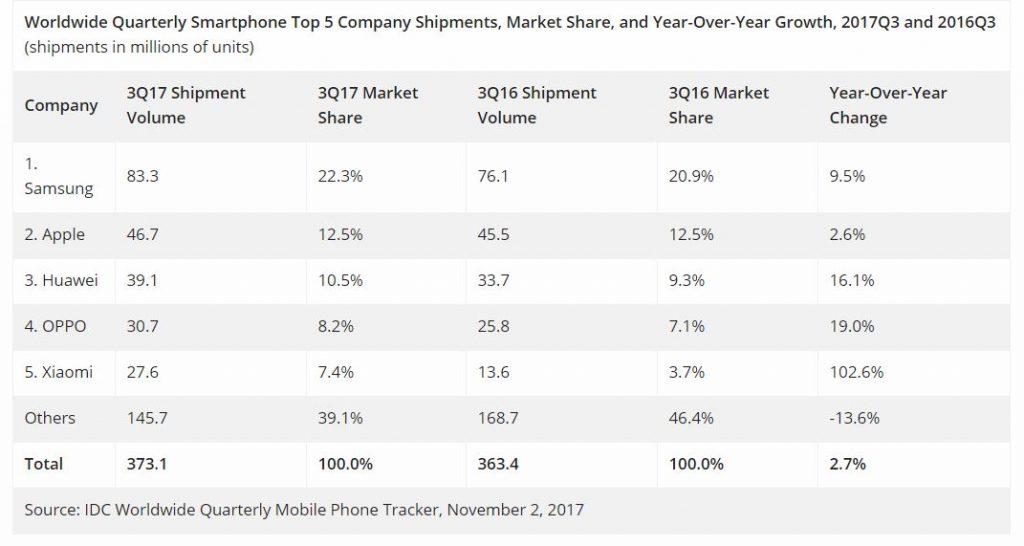

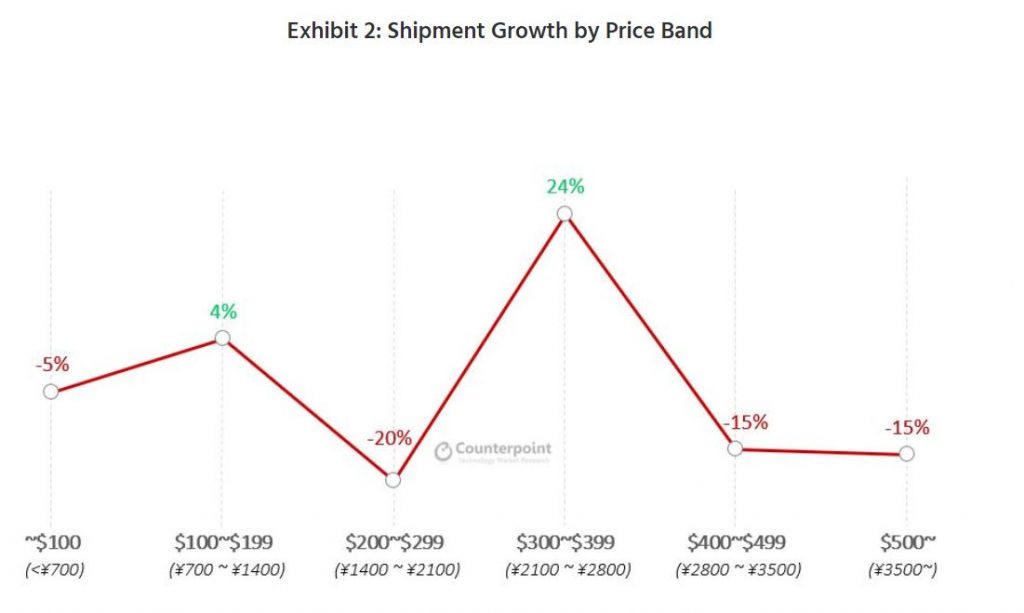
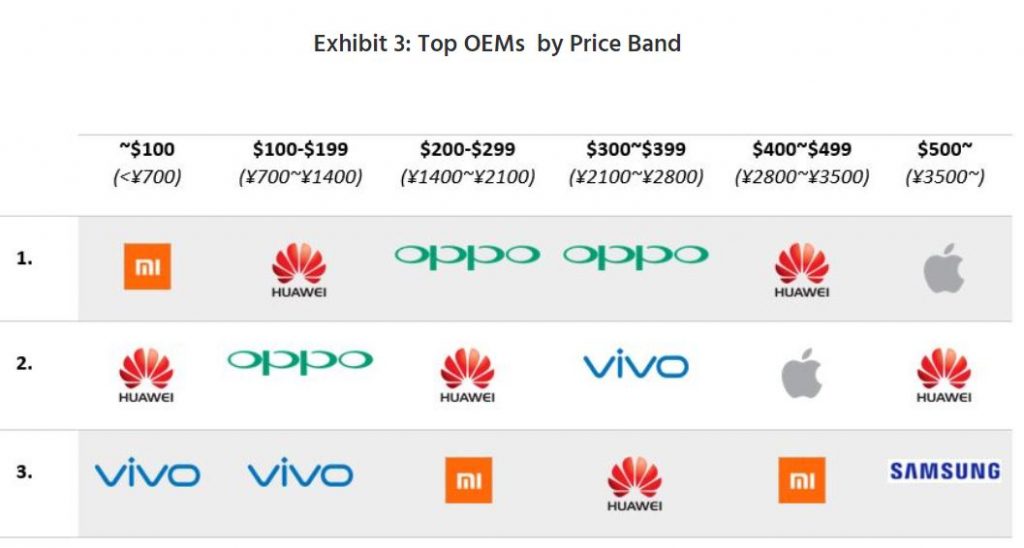
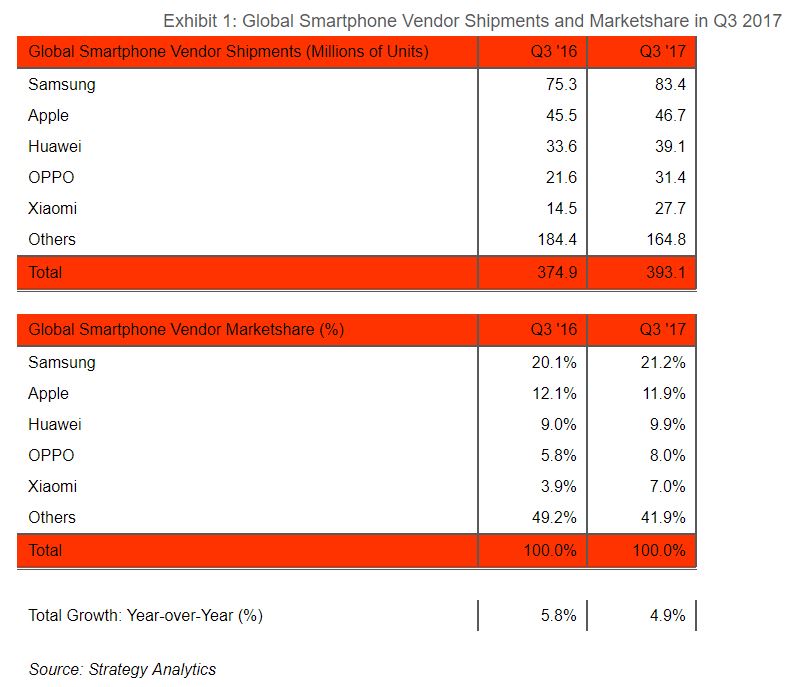
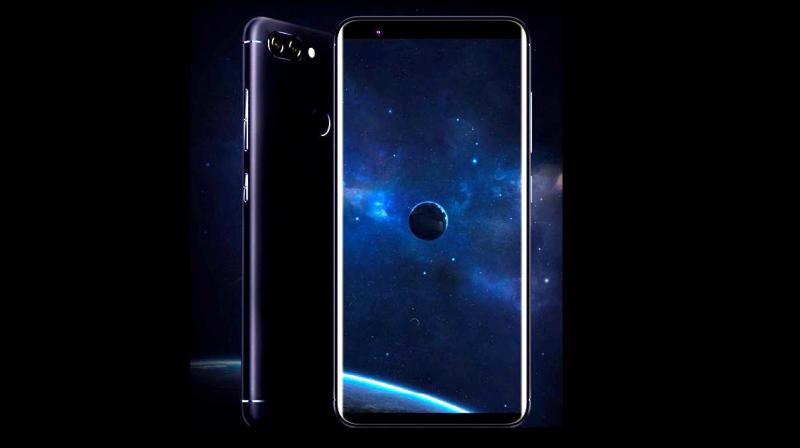
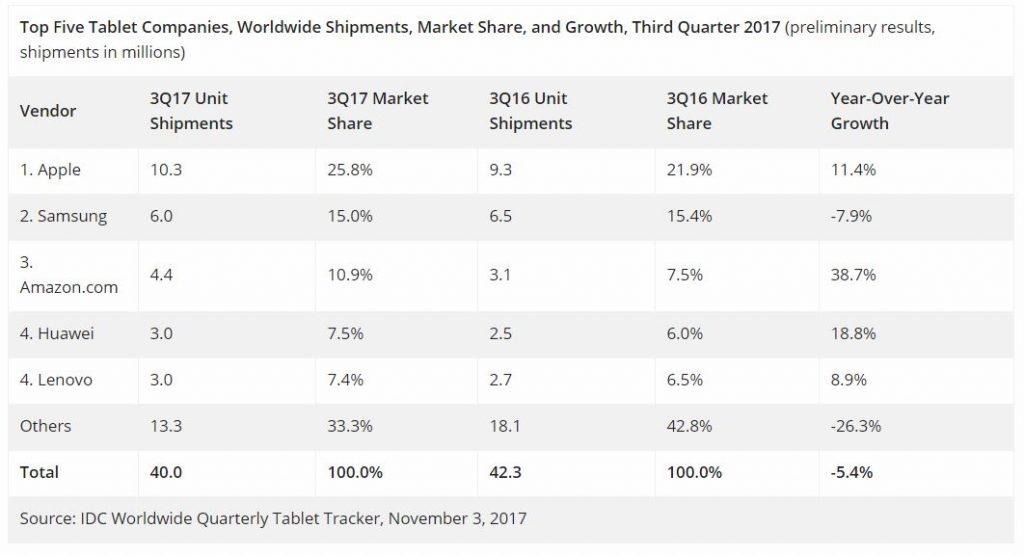

Will you post more data from IDC’s report like in the past quarters?
Dear Oleg, you could find those information via our Market Analysis links. The latest updates normally follow availability of IDC’s data. Thank you!